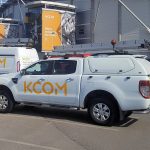Ofcom Move to Redefine UK Geographic Fibre Markets from 2021
Over the next few years the UK will witness a surge in alternative fibre optic (FTTP) broadband ISP networks, which means that investment and competition will vary a lot by geography. In response Ofcom has today begun consulting upon a new approach to how they set regulation and define such markets from 2021.
The importance of such definitions is not to be underestimated, as shown by its impact upon the regulator’s previous 2016 Business Connectivity Market Review. Ofcom’s original review proposed that Openreach (BT) should offer a regulated Dark Fibre Access (DFA) product (i.e. allowing rival ISPs to gain “physical access” to existing fibre optic cables in order for them to install their own equipment at either end of the fibre).
Under this proposal the DFA solution would have been made available in all parts of the UK (RoUK) except central London (including the City of London and Docklands) – where Ofcom deemed that there is sufficient competition in the market – and Hull, where most leased lines are provided by KCOM.
Advertisement
Ofcom also defined DFA as applying to a particular type of leased line known as Contemporary Interface Symmetric Broadband Origination (CISBO), which use newer Ethernet and WDM technologies. But rivals like Cityfibre, Zayo and Virgin Media were unhappy, not least because DFA could have undermined their own fibre investments.
BT also challenged all this via the Competition Appeal Tribunal (CAT) and won (here), not least because the aforementioned market definitions were found to be incorrect.
CAT’s 2017 Ruling
The Tribunal found unanimously that:
(1) Ofcom erred in concluding that it was appropriate to define a single product market for CISBO services of all bandwidths;
(2) Ofcom erred in concluding that the RoUK comprises a single geographic market; and
(3) Ofcom erred in its determination of the boundary between the competitive core segments and the terminating segments of BT’s network.
The move stalled DFA but last month Ofcom proposed to reintroduce it, albeit with some modifications (here). The outcome of this should be finalised during spring 2019. At the same time they acknowledged the need to consult on how they “define geographic areas … in our single, holistic residential and business market review in 2021.” Today that process has started.
Ofcom Statement
By spring 2021, we plan to have regulation in place that varies by geographic area. To promote greater certainty for investors, this new regulation will be in place for at least five years. It will replace Ofcom’s Business Connectivity Market Review and our Wholesale Local Access Review.
In the coming years, we expect to see significant investment in new, competing fibre networks. But investment and competition will vary by geography. So we intend to take a flexible approach to regulation, reflecting how many different competing fibre companies are present in a particular geographic area.
Our initial thinking on how our competition assessments and regulation may vary by geography from 2021 are as follows:
• Category 1 (Competitive areas) In areas where at least two existing networks are present in addition to BT, supplying ultrafast broadband and leased lines services, we would carry out further analysis, for example by looking at market share data, to determine whether these alternative networks provide sufficient competition to ensure that Openreach does not have Significant Market Power (SMP). Where this is the case, no regulation of Openreach would be imposed.
• Category 2 (Potentially competitive areas) includes areas:
– with one or more existing alternative ultrafast networks already present that are not included in Category 1;
– where one or more operator has plans to deploy; and
– where we consider future rollout could be economic.Our focus will be on promoting investment and competitive entry.
• Category 3 (Non-competitive areas) includes areas with no existing alternative ultrafast networks, no operator plans and where we do not consider build is likely to be economic … our objectives are to encourage investment by Openreach while protecting consumers from high prices.
The regulator added that they would “gather data and deployment plans from operators to map existing and potential future networks. We propose to use a number of criteria to determine areas of the UK where network rollout may be economically viable.”
Advertisement
Ofcom is now seeking feedback on all this and they will then set out their initial proposals next spring and by autumn 2019 they plan to consult on a full set of market proposals, including market definition, market power and remedies. Full details here.
Mark is a professional technology writer, IT consultant and computer engineer from Dorset (England), he also founded ISPreview in 1999 and enjoys analysing the latest telecoms and broadband developments. Find me on X (Twitter), Mastodon, Facebook, BlueSky, Threads.net and Linkedin.
« Gov Commits Extra £2m to UK ISP Internet Anti-Piracy Campaign

















































Comments are closed